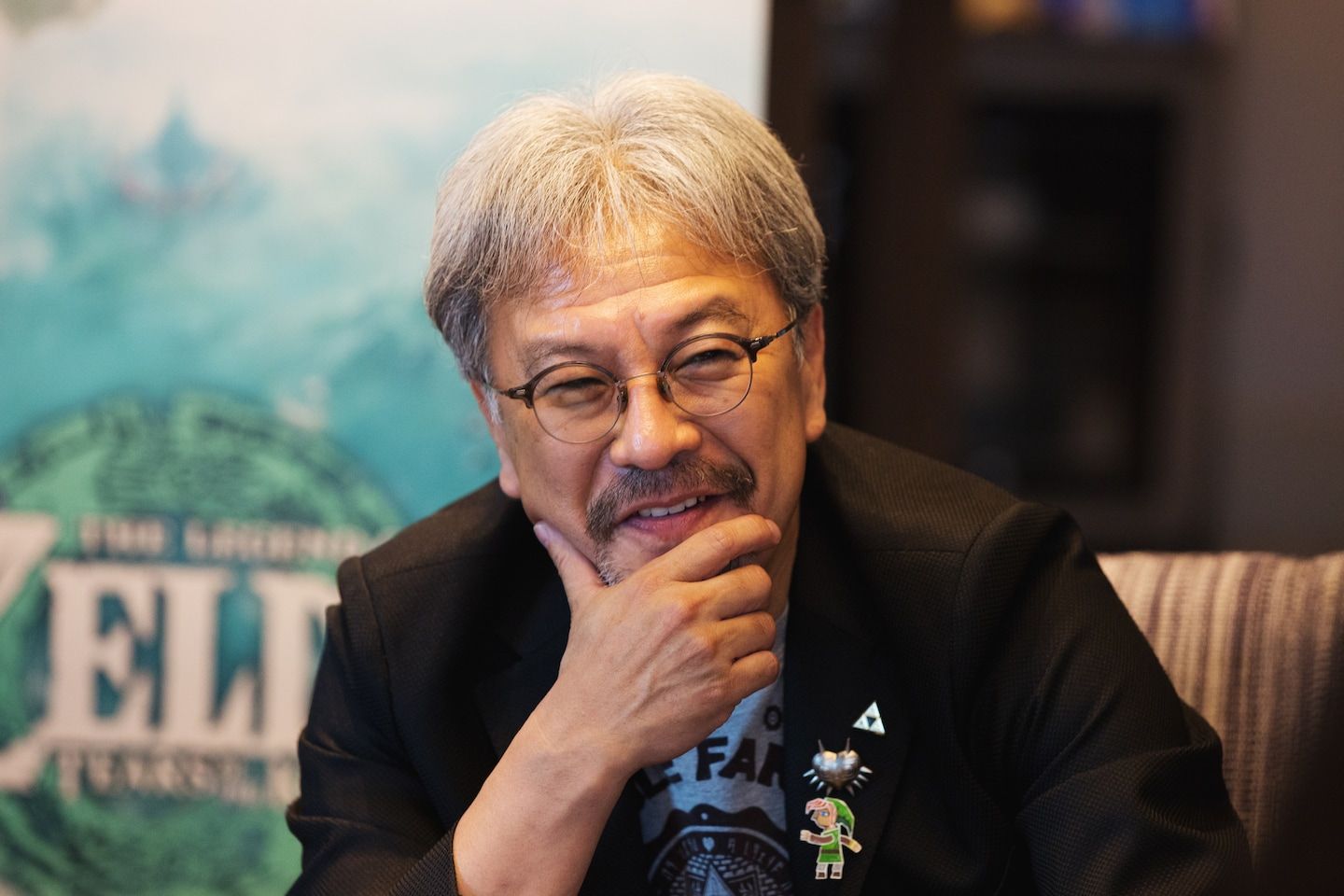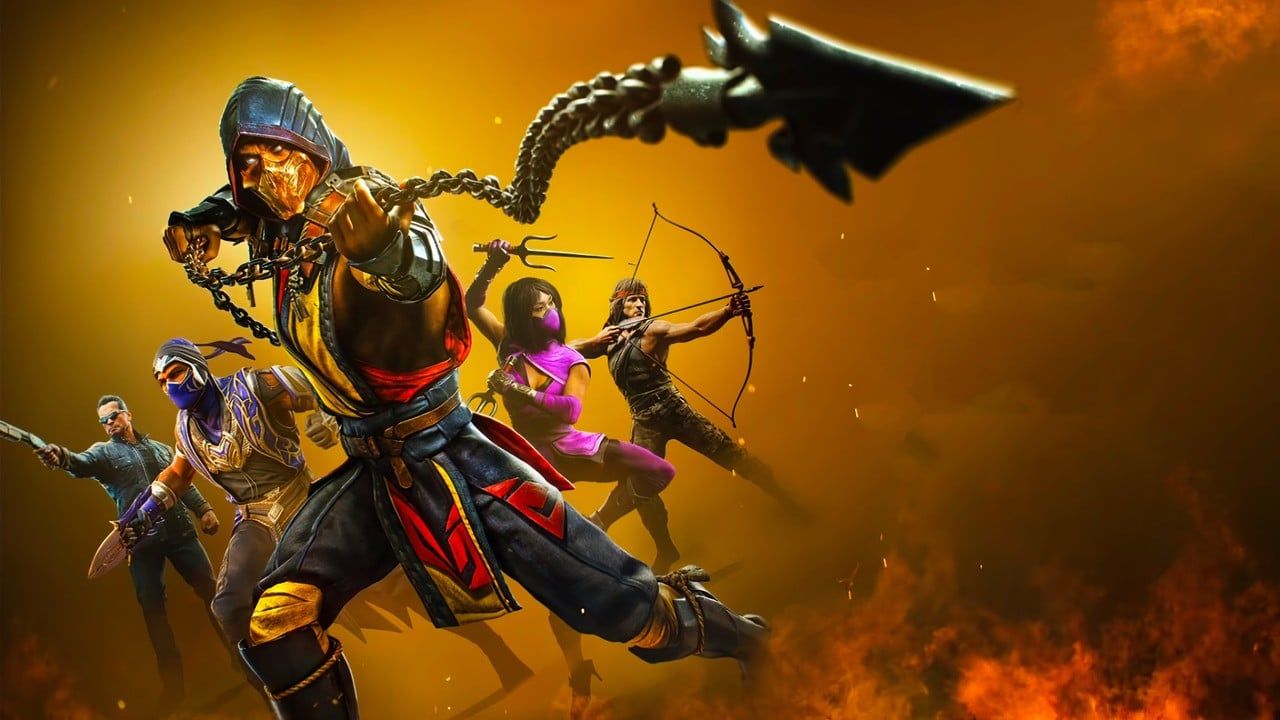Eiji Aonuma, Zelda’s mastermind, is at the peak of his power
Listen 10 min Comment on this story Comment Gift Article Share
NEW YORK — Eiji Aonuma is tired. He’s played “The Legend of Zelda: Tears of the Kingdom” 20 times over the past few years, to test early versions of the title he oversaw as producer. It used to take him days to play through a game. Now it’s a week and a half.
“I found myself at times wondering, ‘should I be doing this at my age?’” said the 60-year-old Aonuma in an interview earlier this month, after traveling here from his home in Kyoto for a launch event on the eve of the game’s release. “I’m kind of reaching my limit here and I don’t want to push myself too hard.”
Later, as he slowly lowered himself to sit for a photo, he smiled and muttered, “like a grandpa.”
As games have gotten bigger, production has become longer and more arduous. The weight of expectation from the Zelda legacy can be overbearing.
Advertisement
Since the turn of the century, Aonuma has been the franchise master of the Zelda series. He’s worked on every title since 1998’s “Ocarina of Time,” often called the “Citizen Kane” of video games thanks to innovations that inspired “Grand Theft Auto” and countless other titles.
A Zelda release has become an Olympics-level event for the industry and fans. Several titles Aonuma has overseen are considered landmarks in the medium’s history, especially 2017′s “Breath of the Wild,” which recently topped a GQ list of the best 100 video games ever made. It’s a hard act to follow.
Now, he can rest just a bit. “Tears of the Kingdom” released to universal critical acclaim and sold 10 million copies in its first three days. It’s a near-impossible accomplishment to follow a masterpiece with another one — and he’s not even done cooking up ideas for the series.
Advertisement
“This game might have been a little bit tougher for me, but we got through it,” he said.
Before joining Nintendo, Aonuma had never even touched a video game. He grew up without toys, so he would create his own, sometimes tying tree branches together. The men in his family were carpenters, and he was on track to continue a version of that work, earning a master’s degree in composition design for marionettes.
But in the 1980s, as Nintendo rose in prominence, he admired the artwork of its emerging franchises, including a new game called “Super Mario Bros.” He reached out to a company artist to express his admiration and landed an interview with Mario and Zelda creator Shigeru Miyamoto, who was impressed with Aonuma’s design work and hired him.
His first job was designing character icons, known as sprites, for 1991’s “NES Open Tournament Golf.” He grew a strong admiration for the Zelda series, particularly “Link to the Past.” His next assignment was a big promotion: game director for his own original treasure-hunter story, “Marvelous: Another Treasure Island.” That 1996 title, released only in Japan, attempted to mimic the Zelda formula.
Advertisement
Video game characters are essentially digital marionettes. Aonuma’s understanding of puppetry proved invaluable when Nintendo began to create games in 3D.
Aonuma became co-director of “Ocarina,” which revolutionized how game characters move and fight each other in 3D space. Unlike cinema, video games require audience control of the camera. “Ocarina” created a “camera-locking” system to focus the perspective while you use the controller for character movement. The system, still used by games today, is a large reason “Ocarina” is often compared to the work of Orson Welles, who redefined how cinema was shot.
He was also the architect of the game’s dungeons, often considered some of the most memorable and challenging in series history, including the infamously difficult Water Temple.
After the success of “Ocarina,” Miyamoto passed on stewardship of the series to Aonuma. The follow-up, “Majora’s Mask” in 2000, used a “Groundhog Day”-style feature, asking players to keep reliving three days to solve all of its puzzles. “Wind Waker” in 2002 bucked industry trends toward higher-fidelity graphics that chase realism, instead showcasing a cartoonlike art style, in keeping with Aonuma’s insistence that Zelda games remain timeless. The backlash became an early example of fan outrage tantrums of the internet, but the art has aged well and proven Aonuma’s instinct correct.
Advertisement
“We are always striving to create surprise,” said “Tears” director Hidemaro Fujibayashi, who focused on the nuts and bolts and is considered a potential successor to producer Aonuma, whose role is more big-picture. “That is the drive … that is what perhaps Zelda is.”
“Tears of the Kingdom” is the latest demonstration of this philosophy, utilizing sky and underground regions to give players an all-encompassing electronic fantasy world. Its central gameplay feature lets players build countless gadgets to solve puzzles. Despite Aonuma’s background in carpentry, it was Fujibayashi who dreamed up the idea of encouraging such creativity. He demonstrated it to Aonuma by building a tank using objects from “Breath of the Wild,” such as cog wheels, slabs of stone and boat paddles. Later, Fujibayashi would scroll through social media to find video clips of players using “Breath” to create flying machines and other contraptions.
Those clips were “exactly what we were trying to do [in “Tears”], and seeing people really enjoying it provided the confidence in knowing that what we’re attempting here is going to be a fun and enjoyable experience for people,” said Fujibayashi.
But as they incorporated the building element into “Tears,” Aonuma’s history as a wood carver caused a clash with the designers. As a visual aid to show that two things are stuck together, glue peeps out of the creases of conjoined objects. To Aonuma, this was unsightly.
Advertisement
As a wood carver, “when I would connect things and glue them together, I was always very picky about not seeing glue where those joints were, and I would always wipe that way because that really got on my nerves,” Aonuma said. “The staff really made an appeal to me … There’s a part of me that feels like I want to wipe that glue away and make things look a little bit more neat and tidy. But in the end, they were right. Being able to clearly see where the objects you’re connecting are put together makes this kind of gameplay fit well and in line with the ethos of Zelda.”
The “ethos of Zelda” focuses on such new, unexpected concepts of play — even as many other modern games prioritize story, like TV and film do. With “Tears,” at “the beginning of development, there really isn’t a story,” Fujibayashi said. “Once we got to the point where we felt confident in the gameplay experience, that’s when the story starts to emerge.”
Still, Zelda fans feverishly study the lore, enamored by the winding, confusing timeline of events throughout the series since the first game in 1986. Certain games are prequels, others are sequels. “Breath of the Wild” confounded Zelda archaeologists: Where did this fit in? Aonuma has been historically evasive about this answer, and that hasn’t changed today.
“I guess I would leave it to the fans and hope they will continue to discuss this among themselves,” Aonuma said, “and I’ll be looking forward to see where those discussions lead.”
“Breath” became most successful title in the series, with about 30 million copies sold, creating especially high expectations for “Tears.” It was supposed to be out by last year, but in March 2022, Aonuma had to announce its delay, “to make sure that everything in the game was 100 percent to our standards,” he said. Big video games these days have been launching with bugs and poor graphical performance, while “Tears” was released with no issues, despite more complex physics than even the most expensive PlayStation 5 title.
Advertisement
Another hiccup came when the second trailer dropped in February, and the team noticed a lack of enthusiasm. “People had not gotten their heads around the gameplay elements or where the fun might be,” Aonuma said. Nintendo decided to feature Aonuma explaining the game’s concepts in a 13-minute demonstration, which did the trick.
Aonuma hopes “Tears of the Kingdom” will inspire people to rethink how they approach obstacles outside the screen. He thinks of his son and his frustration around everyday problems. “I’ll ask him, ‘What was your goal when trying to reach this result?’ And he’ll say ‘I wasn’t really thinking much when I was doing it. I just did it,’” Aonuma said, with a deep sigh. “I would really be happy if our game encourages imaginative thinking in people, and that they could carry that into their real lives.”
Aonuma may be tired, but he relieves stress by playing a Nintendo exercise game, “Ring Fit Adventure,” earning a formidable level of 430. And he’s conserved his professional energy by avoiding any other intellectual property — focusing on just one.
“Bigger games require a lot of new ideas to fill them up. Any new ideas I might have made into some other IP, I’ve invested those ideas into the Zelda games.” And he doesn’t plan to step down as series master.
That’s great news for Aonuma’s fans, many of whom stood in a line for the “Tears” midnight launch event at Nintendo’s Rockefeller Center store celebrating its May 12 release — it snaked around the block and grew only longer as the night wore on.
Advertisement
Inside the store, right before it opened, Aonuma spotted some Zelda merchandise and insisted that he pay for it. Employees told him that he should at least get the 20 percent employee discount, and he relented. “I have my job because of you,” an employee said, beaming. Aonuma smiled and received his Zelda hooded sweatshirt.
Joe Puopolo, 33, a telecommunications technician from Toronto, won a trip to New York via a contest by presenting photos of his Zelda-themed wedding, his child swathed in Zelda clothing and a shelf with hundreds of rare Zelda collectibles. Puopolo approached Aonuma in the store, and received a handshake and autograph for his “Tears of the Kingdom” collector’s edition.
“I know everyone has celebrities, sports icons … this is my celebrity,” Puopolo said. “This is my hero. He made my favorite game of all time, ‘Majora’s Mask.’ I joke with my wife that her father saw Neil Diamond in concert back in the day, and he says that was the highlight of his life. This was my Neil Diamond. This is the peak for me.”
GiftOutline Gift Article
Source: The Washington Post


